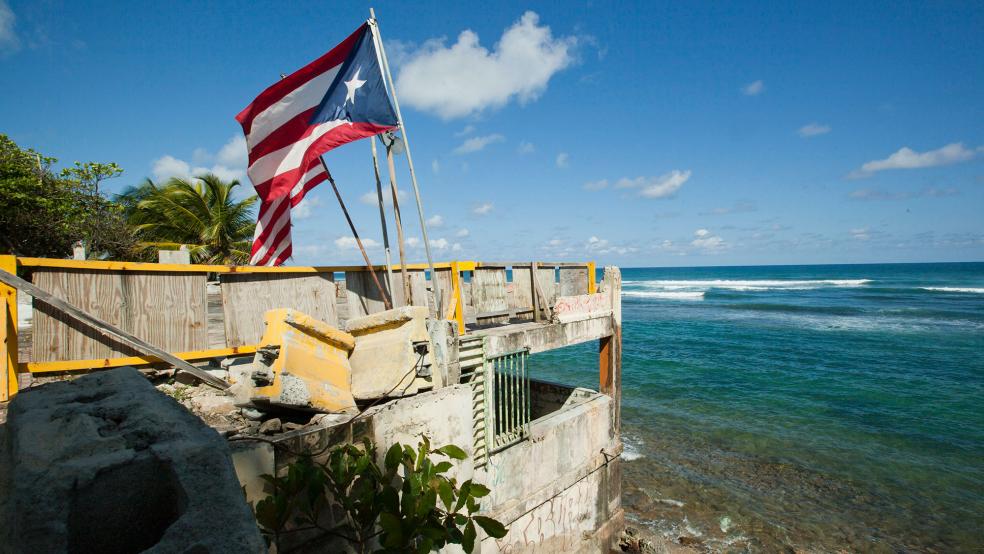Puerto Rico is in the throes of a fiscal crisis and Congress appears unwilling to help. House and Senate legislation that would extend Chapter 9 protection to municipalities in Puerto Rico is opposed by the Republican majority, even though it would not cost US taxpayers a penny.
Opposition to the legislation is based in part in a concern for bond investors. Congressman Trent Franks (R-AZ) told Bloomberg Politics that investors relied on the fact that infrastructure investments on the island were protected from the threat of bankruptcy, and that changing the bankruptcy rules in the middle game would be unfair.
However, the history of municipal bonds suggests otherwise. In the late 1920s and early 1930s, thousands of US municipalities defaulted on their bonds. The problem started in Florida, where local governments overbuilt infrastructure. With the onset of the Depression, municipal defaults spread to many other states, with especially high concentrations in North Carolina, New Jersey, Michigan, Ohio and Arkansas.
There was no municipal bankruptcy law at the time, giving rise to uncertainty over creditor rights and complex litigation. In 1934, Congress addressed the situation by adding Chapter 9 to the bankruptcy code, creating a mechanism for municipal debt adjustment. The new law passed by a wide 45-28 margin in the Senate and its enactment was applauded by municipal finance experts.
Related: How the U.S. Is Helping to Sink Puerto Rico
The idea that the lack a legal bankruptcy mechanism protects bond investors from default risk is clearly refuted by the Depression experience, as well as by the more recent default by Harrisburg, Pennsylvania -- a state that explicitly forbid a Chapter 9 filing for the city. In fact, Puerto Rico bonds have been paying substantially higher coupons than US Treasuries for years – despite their favorable tax treatment – suggesting that investors were aware of and demanding compensation for default risk.
Further, the 1934 law changed the rules for municipal bondholders in the 48 states, yet it was welcomed by market participants and almost no one would advocate repealing it today. Although cities in Puerto Rico and other U.S. territories had outstanding bonds at the time, none appear to have been in default, perhaps explaining why the 1934 legislation was not extended to US possessions.
A better criticism of legislation extending Chapter 9 to Puerto Rico is that it is insufficient. If the bill were enacted, the commonwealth government would not be able to declare bankruptcy. Further, as noted bond commentator Kristi Culpepper explains, public corporation debt backed by service charges and other “special revenues” cannot be adjusted in a municipal bankruptcy process, leaving revenue bonds issued by some publicly owned corporations out of the process. But Chapter 9 could be applied to some classes of public corporation debt as well as the obligations of Puerto Rico’s 78 “municipios” (local governments). As I reported in The Bond Buyer earlier this year, a number of these municipios are flat broke and would thus be eligible for the Chapter 9 process.
While Culpepper and congressional Republicans are correct in arguing that Chapter 9 extension is an incomplete solution to Puerto Rico’s debt problem, it is far better than the prevailing alternative of no federal action whatsoever.
Related: Can the U.S. Avoid a ‘Chaotic Resolution’ of the Puerto Rico Debt Crisis?
It thus appears that the only real reason for not extending Chapter 9 to Puerto Rico is investor protection – but just who are these investors? Much of the commonwealth’s debt has been snapped up by hedge funds at steep discounts. If the funds can compel Puerto Rico public sector entities to service their bonds on time and in full, they will make substantial profits. One out of every five dollars of this profit will go to hedge fund managers, who are taxed at lower capital gains rates. Securities regulations have helped hedge funds and other Wall Street institutions corner the market on Puerto Rico bonds by prohibiting trades of less than $100,000 for any newly issued securities. With this minimum in place, individual investors are effectively barred from buying commonwealth bonds.
Since the source of repayment for government bonds is often tax revenue, Wall Street interests are really trying to maximize their take from taxpayers – and not just taxpayers in Puerto Rico. A very large proportion of Puerto Rico government revenue comes from taxpayers in the fifty states.
Public sector entities in Puerto Rico receive over $7.2 billion in federal grants annually. This amount represents over 10% of the Commonwealth’s GNP and 22% of total government spending. I have uploaded a list of recipient entities and amounts for FY 2013 here.
Further, according to USASpending.gov, the US federal government spent a total of $21.3 billion in Puerto Rico in fiscal year 2014, while the IRS reports that commonwealth residents and corporations contributed just $3.6 billion in federal tax revenue during the same year. The difference between these two figures – net transfers from taxpayers in the fifty states - represents about a quarter of Puerto Rico’s GNP.
Related: A Fiscal Crisis Leaves Puerto Rico No Good Options
Thus, Puerto Rico and its governments derive much of their revenue from US taxpayers. Although federal grants are always made for a specific purpose, government revenues and expenditures are fungible. Governments receiving federal support can shift their own-source revenue away from federally subsidized priorities and towards other purposes – such as enriching hedge fund managers.
By denying the Chapter 9 option to Puerto Rico municipalities and public corporations, congressional Republicans might well be doing a disservice to the middle class taxpayers they claim to represent.





